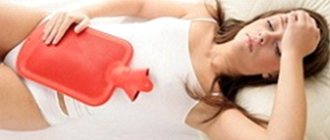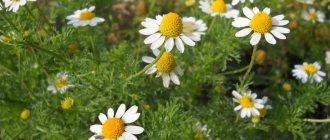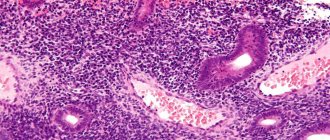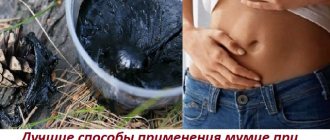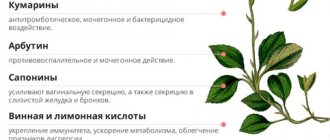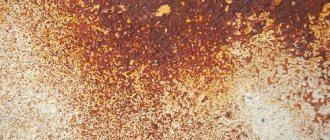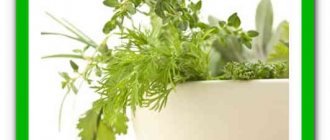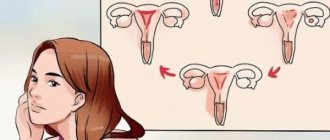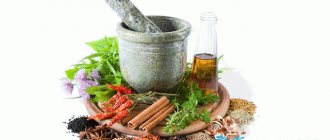In the treatment of many gynecological diseases, tampons soaked in some kind of drug are actively used. For treatment, tampons are used, made independently from sterile cotton wool and gauze. All tampons work well only in the initial stages of the disease.
Cervical erosion. Products for the treatment of cervical erosion may include the following components:
- Propolis in combination with butter (12 g of beekeeping product and a pack of softened butter), mix the ingredients well until smooth. Soak the tampon and insert it as deeply as possible, leave it overnight, and remove it immediately in the morning.
- Sea buckthorn oil. The course of treatment is for two weeks, the tampon must be changed once a day.
Myoma. Tampons are made with:
- A mixture of aloe juice, honey and propolis. Take 1 part of bee products and 2 parts of aloe juice and add it to honey heated in a water bath. The composition is mixed, then the soaked tampon is inserted deep into the vagina overnight. The course of treatment can last several months.
- Onions with honey. A small slice of onion should be soaked in honey for 12 hours, then wrapped in a sterile bandage and inserted into the vagina. The product helps stop bleeding and helps reduce the volume of the tumor.
Fibroma. For treatment you can use:
- A mixture of aloe juice and sea buckthorn oil. For impregnation, equal parts of oil and juice are taken; the product can be left in the vagina overnight.
- Mumiyo. The product in an amount of 2.5 grams is dissolved in 10 ml of water, then a tampon is soaked in the solution and inserted deep into the vagina overnight.
Endometritis . The most effective means include the following:
- Tampons using pharmaceutical preparations, for example, with Vishnevsky ointment or Levomikol. Inserted into the vagina for several hours. Miramistin is also suitable.
- Sea buckthorn oil, honey, propolis, mumiyo and aloe juice are used for therapy.
Thrush . Can be used:
- Kalanchoe juice. Grind the leaves until the juice appears, apply the resulting pulp to a tampon and insert it into the vagina for several hours. The course of treatment lasts a week.
- A decoction of oak bark, to which you can add other medicinal plants, for example, Kalanchoe juice, aloe or a decoction of chamomile flowers.
They also produce Chinese tampons - Clean Point and Beautiful Life. They are impregnated with a herbal-based composition. They have a pronounced anti-inflammatory and analgesic effect, and also have a positive effect on the vaginal microflora and help normalize blood circulation.
Anal injections are used primarily to treat hemorrhoids, which often occur in women in late pregnancy. Also, for some diseases, you can use gauze balls soaked in healing mud.
Read more in our article about the effects of various tampons, their impregnation and preparation.
Composition of Chinese tampons
Chinese medicine has long established itself as a complex of highly effective methods of healing from a variety of diseases. Based on the knowledge of the Chinese about the human body, the functioning of the body and the flow of energy, all Chinese healing systems and methods are created.
Therapeutic tampons from China are made taking into account the healing properties of medicinal plants and their effect on the functioning of various organs. Phytotampons relieve pathological symptoms, normalize the balance of vaginal microflora, preserving colonies of beneficial bacteria.
The composition of Chinese medicinal tampons has a natural basis. All components are selected taking into account the characteristics of gynecological diseases. Phytotampons are considered an environmentally friendly product that is safe for health.
The most common components of phytotampons from China:
- ginseng;
- myrrh;
- incense;
- angelica;
- dracaena;
- carnation;
- Sophora, etc.
Therapeutic Chinese tampons contain a lot of herbal ingredients that help women cope with many gynecological ailments.
Making your own tampons
In order to prepare the basis for applying the medicine, you need to prepare:
- a package of sterile cotton wool, bandage or gauze;
- disposable gloves;
- sharp scissors;
- thread with a needle.
With clean hands, you need to roll a ball of cotton wool with a diameter of 2-3 cm and wrap it in a double layer of a strip of bandage about 20 cm long. The resulting ball must be pulled together with a thread and its ends secured.
Next, the resulting tampon must be soaked in the prepared medication and inserted into the vagina. The left ends of the thread will then help you easily remove the already used one.
We recommend reading about the treatment of adnexitis with folk remedies. From the article you will learn about the treatment of adnexitis using non-traditional methods, herbal medicine for oral administration and external means.
And here is more information about the treatment of endometritis with medicinal tampons and decoctions for douching.
Any medical procedures should be carried out only under the supervision of the attending physician. In most cases, herbal remedies are only an auxiliary method of treating gynecological diseases, and their independent use can only aggravate the situation.
Mechanism of action on the female body
A lot of dead cellular structures, pathogenic microflora and other pathogenic substances accumulate in the uterine and vaginal cavities. Chinese tampons cleanse the vaginal cavity of pathogens, accumulation of blood clots and broken cells. The components of phytotampons actively influence pathogenic microorganisms, killing them.
From the discharge that appears after removing the tampon, you can understand the nature of the pathological process:
- light clots indicate the process of cleansing the vagina from dead particles;
- blood clots indicate the removal of remnants of menstrual fluid from the vaginal environment;
- watery discharge indicates the presence of an infectious process or inflammatory lesion in a woman;
- brown daub warns that there is an old uterine inflammation.
Based on the nature of the discharge, a woman will be able to roughly understand the presumptive diagnosis. In addition to cleansing, antibacterial and antimicrobial effects, medicinal tampons restore the mucous membranes of the gynecological area, normalizing the functioning of all organs of the female reproductive system.
Inflammation of the uterus, treatment with folk remedies using tampons
Processes that occur in the uterus and fallopian tubes, causing pain, are called inflammation of the uterus. Traditional medicine can be quite effective for this problem, but it must be under the supervision of a doctor. After all, diseases arising from the inflammatory process can lead to more serious complications. There are absolutely no harmful microbes in a healthy uterus. Under unfavorable conditions, microbes are able to penetrate the uterus and cause various inflammations there. They can be caused by surgical interventions, during childbirth, abortion, insertion of IUDs and other mechanical contraceptives.
Often women face this question. If left untreated, this disease can lead to sepsis, infertility and even death. Therefore, when the first signs of the disease appear (and these include fever, vaginal discharge, severe abdominal pain), you need to consult a doctor. To quickly defeat the disease, treatment prescribed by a doctor can be combined with some folk remedies. In addition, folk recipes can help with the chronic form of the disease.
All folk remedies can be perfectly supplemented with medications prescribed by the doctor. Natural components can relieve pain and speed up the healing process. Basic recipes include:
50 grams of dry marshmallow root in its entirety is poured with 0.5 liters of water. This infusion for inflammation of the uterus is left for a day in a closed container. After this, it is brought to a boil and simmered over low heat for about 2-3 hours until the root softens. After that, it is crushed in a meat grinder. Melt two tablespoons of lard over low heat, combine with the root and simmer for a few more hours under the lid. Cool, mix, take three tablespoons during meals. The general course of treatment lasts two weeks.
1 cup flaxseeds are ground in a coffee grinder and poured with a liter of hot water. Boil for about 10 minutes, cool, strain and add 4-5 tablespoons of natural linden honey to the warm broth. The mixture is left covered for a day. After this, the folk remedy is used for douching at least twice a day.
A very effective folk remedy for inflammation of the uterus is St. John's wort. 100 grams of herbs are poured into a liter of boiling water and boiled under the lid for about 5 minutes. It is cooled, filtered and the decoction is used for douching in the morning and evening. Before use, the decoction must be slightly warmed.
Viburnum is considered a traditionally feminine berry. It has been used for treatment for a long time. To prepare the solution, one tablespoon of flowers is poured with a glass of boiling water, cooled, filtered and a teaspoon of linden honey is added. You need to drink half a glass 3 times a day.
An infusion of medicinal clover will help relieve inflammation and alleviate pain. To prepare it, brew 100 grams of dry herb in 700 grams of boiling water and leave for a day in a warm place. Drink a glass of infusion four times a day before meals, after adding honey.
For treatment, you can also use ordinary viburnum. Brew the flowers of this plant in boiling water in a ratio of 1:10. When the broth has cooled, add a little honey and then boil again. Then strain the infusion and let it cool. The infusion should be drunk three times a day
Using sitz baths with the addition of bay leaf decoction will also help with inflammation. To prepare it, brew 100 grams of leaf with boiling water and cook for 15 minutes.
All these tips are folk, time-tested, remember that they should be used under the supervision of a doctor
This disease is considered a real problem for women. Folk remedies will be effective if you follow a special diet, since therapy involves preliminary cleansing of the intestines, kidneys and liver. The disease usually occurs due to hypothermia, which can provoke the development of a variety of infections. Women with weak immunity can get this disease from heavy lifting, chronic constipation, and so on.
When symptoms of inflammation appear, it is best to begin treatment without delay and under the guidance of a gynecologist, who, having determined the causes of its development, will be able to prescribe appropriate treatment. Although home treatment has many options for solving this problem, it is still worth consulting a doctor before using them. Below are some treatment options.
Effective treatments with juices and berries for inflammation of the uterus
It is worth eating as many rowan berries, blackberries, cranberries and blueberries as possible. It is also advisable to consume pumpkin in all forms. For example, you can pass a raw pumpkin through a juicer or a meat grinder (in this case, you will need to separate the juice from the pulp) and drink the resulting juice in large volumes.
If possible, it is useful for inflammation of the appendages to eat fresh juniper berries 3 times a day. You should start with 4 berries at a time, increasing their number by 1 every day. When you reach 13 berries at a time, you need to start decreasing their number by 1 every day, returning to the original amount of 4 berries per reception.
First of all, before treatment you need to cleanse your stomach (while avoiding the use of castor oil) and observe bed rest. To alleviate pain, place a heating pad with ice on your stomach, and also take 0.01 g of caffeine three times a day.
Mud baths and hot douching are good for chronic inflammation. You can also treat inflammation of the appendages by lubricating the lower abdomen with ichthyol and taking potassium iodide three times a day.
Eat as much pumpkin as possible in any form. The pulp of raw pumpkin minced through a meat grinder is especially useful.
It is also useful to use cranberries, blueberries, rowan berries and blackberries for treatment - fresh or mashed with sugar.
Three times a day, half an hour before meals, take a dessert spoon of juice from fresh aloe leaves.
Melt 400 grams of paraffin in an aluminum bowl. Lying on your back, lubricate the lower abdomen with a cloth soaked in paraffin from left to right. Try to complete the treatment while the paraffin remains hot. Then cover yourself with a blanket and lie down until the paraffin cools down.
Boil a large onion in a liter of water until it becomes soft. Strain the decoction made according to this folk recipe and use it for douching.
Crush and add water to the head of garlic. Moisten a tampon with a thread tied to it with this solution and place it in the vagina for a couple of hours. Repeat the procedure until recovery.
Traditional healers also recommend drinking the juice of certain fruits, in particular rowan, blackberry and blueberry. Pumpkin is also useful for inflammation of the appendages, which can be consumed to your liking in porridges and soups, baked in the oven or as one of the components of a salad. It is also recommended to drink pumpkin juice.
This is not a complete list of traditional methods of treatment. However, it is important to remember that, no matter which one you use, you must be treated under the supervision of a doctor.
Effective methods of treating decoctions and infusions for inflammation of the uterine appendages
Home treatments often recommend the use of various infusions and juices. However, in order for it to be successful, it should be used in a complex of means not only of folk medicine, but also of official medicine.
Most often in medical practice, the cause of inflammation of the female reproductive system is various infectious agents, such as gonococci and chlamydia. For treatment, along with medications, you can use traditional medicine, which are proposed in this article.
Infusion of aspen ash and bath infusion of bay leaf from the 18th day, take 4 tablespoons after eating the infusion. After this, a break is taken for 22 days and the infusion is repeated again for 11 days. In the evening, take sitz baths from a warm infusion of bay leaves. To do this, 80 leaves are pre-crushed and poured with one liter of boiling water. It is boiled for about 15 minutes, after which the decoction for inflammation of the appendages is filtered and added to a bath with warm water, which is one-third full.
Patients who have inflammation of the appendages are also recommended to regularly take mud baths and enemas from chamomile decoction. To make such an enema, you need to brew dry chamomile in a porcelain cup (at the rate of 1.5 tablespoons per mug), cover with a saucer and wrap, leaving to infuse for 20 minutes. Then do a cleansing enema with warm water. Next, insert the strained chamomile infusion into the anus, lie on your side and wait until the infusion is completely absorbed. If it doesn't work the first time, try again. It is worth doing this procedure every evening, and if possible, then several times a day.
Brew leaves of round-leaved wintergreen instead of tea, or use it for treatment in combination with St. John's wort and regular tea. This remedy helps after taking it regularly for several months, 3-4 cups daily.
You can also drink a decoction of corn silks and corn stalks, and 30 minutes before meals, take a dessert spoon of freshly squeezed juice from aloe leaves for inflammation.
Mix equal parts rose hips and black currants, brew 20 grams of the mixture with a glass of boiling water and let it brew for one hour. Strain, add sugar and drink this folk remedy half a glass three times a day.
Pour a glass of boiling water over dried and crushed walnut leaves (1 tablespoon) and leave for 4 hours; drink the resulting decoction within 24 hours.
The herb cinquefoil can also be used in treatment. For infusion you need to pour 2 tbsp. spoons of herbs with 2 glasses of hot water. You need to drink ½ glass before all meals. In the evenings, you can douche by preparing a more concentrated infusion - pour 2 cups of boiling water into 5 tbsp. spoons of grass.
In addition, you can make infusions from black currant berries and rose hips by pouring 20 g of their mixture with a glass of boiled water. If desired, you can add sugar to this infusion and consume half a glass of it 3-4 times a day.
If desired, you can make infusions from juniper berries. To do this, you need to steep 15 berries in a glass of hot water for 4 hours. To use this infusion to treat inflammation of the appendages, take a tablespoon 3 times a day.
Traditional recipes for remedies for inflammation of the appendages
In most of the recipes intended for those who have inflammation of the appendages, folk treatment uses various mixtures of medicinal plants. So, for example, it could be a mixture made from yellow sweet clover herb, coltsfoot flowers and lemon balm leaves, taken in a 1:1:1 ratio. All components are thoroughly mixed. Next, you need to take a tablespoon of the mixture, pour a glass of boiling water over it, let it brew for an hour under the lid, and then strain. The course of taking this infusion is 1 month, 2 spoons before meals.
As an alternative, you can make a collection by mixing 1:1:1:1 St. John's wort, yarrow, nettle and thyme. A tablespoon of this collection is poured into 2 glasses of hot water and infused. You need to take the infusion 2 spoons 3-4 times daily for 2 months.
You can make a similar mixture using chamomile flowers, nettle leaves and dry valerian root (as in the previous case, you need to take them in equal proportions). A tablespoon of the mixture is poured into 1 liter of hot water, cover and leave for an hour. You should drink this infusion 3-4 times a day, 1/3 cup.
Herbal collection for inflammation of the appendages. Take 1 small (teaspoon) of wild mallow flowers, 1 teaspoon of pre-crushed oak bark, 2 small spoons of medicinal sage, 1 tablespoon of walnut (leaves), 1 tablespoon of chamomile flowers. Pour about 2 tablespoons of this mixture from the appendages into a bowl, preferably enamel, pour boiled hot water (1 liter), let it brew for at least half an hour. After straining, this herbal collection can be used for tamponing and douching.
Herbal mixture for pain relief (analgesic). To prepare it, you need to grind 1 tablespoon of the roots of the valerian officinalis plant, 1 tablespoon of the leaves of the peppermint plant, 2 dessert spoons of the flowers of the chamomile plant. Pour the entire crushed mixture into a bowl, as already mentioned, preferably enameled, pour in 1 glass of hot boiled water, leave for about half an hour under the lid, then the resulting infusion must be thoroughly strained. The resulting medicine for the treatment of appendages should be taken in the morning and evening, about one glass each.
Herbal mixture for regulating menstruation during inflammation of the appendages. Take 1 tablespoon of the common yarrow plant, 1 tablespoon of the leaves of the stinging nettle plant, 10 brown rose hips. Pour the ingredients into a saucepan, add 1 cup of hot boiled water, then leave for 6 hours covered. After filtering this infusion, it should be used warm for microenemas, 50 ml daily at night, before the arrival of menstruation.
An infusion that improves blood. Mix 1 large spoon each of brown rose hips and wild strawberries, pour the ingredients into a bowl, pour boiling water (3 cups), then leave for about 40 minutes. After straining, take a quarter glass 2 times a day.
One of the most excellent remedies for inflammation of the appendages is juniper. To get rid of this insidious disease, you should chew juniper berries three times a day. You need to start with four berries, then their number will need to be increased by one berry every day. The number of berries is gradually increased to thirteen, and then reduced in reverse order to four.
Treatment regimens for inflammation of the appendages
Medicinal herbs are used to treat appendages, for example, you can use the following scheme:
Aloe and calendula are used according to the following folk recipes:
On odd days, mix one and a half glasses of aloe juice and two glasses of Cahors, add a glass of honey. The mixture is infused for two days in a warm room, after which it is stored in the refrigerator. Take two tablespoons twice a day before meals.
On even days, mix one and a half teaspoons of dried calendula flowers and one and a half teaspoons of dried plantain leaves. Pour ¾ cup of boiling water over everything and leave for 35 minutes. The infusion is filtered, divided into 3 parts and drunk all day after meals.
Celandine and sea buckthorn oil
From the 11th day on odd dates, pour boiling water over a spoonful of dried celandine herb, cool, strain, and add half a teaspoon of aloe juice. The mixture for inflammation of the appendages is taken before bed.
From 12 noon on even-numbered days, a tampon soaked in sea buckthorn oil is inserted into the vagina as a folk remedy.
Inflammatory processes in the female reproductive system in general, and in the uterus in particular, can have a different nature. They can be infectious, bacterial, viral, fungal, etc. But these are almost always very serious conditions that require immediate medical intervention and treatment. Despite this, many women try to carry out therapy using traditional methods. How to treat inflammation of the uterus at home, and is it worth doing? This is discussed in the material below.
Traditional medicine methods are much less effective than drug treatment prescribed by a doctor. They cannot treat inflammatory processes. However, such methods can slightly improve the general condition, and sometimes partially relieve unpleasant symptoms. Therefore, they can be used as additional therapy to the main therapy, and also, during recovery, to speed up this process.
It is important to remember that the inflammatory process can develop very quickly. And neglecting drug treatment in favor of folk treatment can lead to the fact that quite a lot of time will be lost, during which the process will develop much stronger and spread more widely.
Contraindications
In principle, it is impossible to treat inflammation of internal organs using traditional methods. This is a serious condition that can lead to abscesses, sepsis, peritonitis, and infertility. The process can spread to neighboring organs at any time, as it spreads quickly. Therefore, using exclusively home methods is prohibited.
If the patient uses such methods in combination with therapy prescribed by the doctor, then there are the following contraindications:
- Do not use any formulations internally during pregnancy or breastfeeding;
- You cannot use any prescriptions that have not been agreed upon with your doctor;
- Alcohol-dependent and pregnant women should not ingest alcohol-containing tinctures;
- Women with diabetes are prohibited from ingesting recipes containing honey or sugar;
- Women who are allergic to bee products (or only one of them) should not use honey, propolis, or mumiyo in such recipes;
- It is important to take into account individual intolerance to the components;
- For patients with hormonal imbalance or taking hormonal medications, use plants rich in phytoestrogens (hogweed, red brush, etc.) with caution.
Therapy for the condition can take quite a long time. Such recipes are good to use not only during treatment, but also during the recovery period, that is, after the end of treatment therapy.
ethnoscience
How to treat the disease with these methods? This is discussed below. The main direction of such therapy is taking decoctions and medicinal compounds internally. But local methods of exposure are also used, such as douching and baths. Taking medications internally can improve the overall condition of the body, while topical medications will relieve symptoms and speed up healing and recovery.
Many types of herbs are rich in various components that have antiseptic, healing, regenerating and antitumor effects. They can improve microcirculation, relieve inflammation, and reduce the severity of severe symptoms due to the analgesic effect. That is why herbs are the main component of most folk recipes for various diseases and pathologies.
Brew 1 tablespoon of viburnum flowers in 10 tablespoons of boiling water. Boil for 2-3 minutes. Cool the broth a little and add a teaspoon of honey. Boil the broth again, strain and cool. Drink this remedy three times a day.
Pour 100 grams of dry sweet clover herb into 700 ml of boiling water. The solution must be infused in a closed container for 24 hours. For taste, you can add honey to the composition. You need to drink it four times a day before meals, 200-250 ml.
One tablespoon of viburnum flowers is poured into a glass of boiling water. The product is infused in a closed container for three hours. It should be taken after it has cooled and after adding a teaspoon of honey. Drink the product three times a day, half a glass.
Douching
Douching is the introduction of a medicinal solution into the vagina using a syringe without a needle or syringe. This procedure can easily be carried out at home. Its poles are considered to be that the medicinal composition gets closer to the affected area.
Boil 100 grams of St. John's wort in a liter of boiling water for 5 minutes. After this, strain and let cool to an acceptable temperature. Use the douching product twice a day.
Pour a glass of ground flaxseeds into a liter of boiling water. Boil for 10 minutes and leave to cool. Then add 5 tablespoons of honey. Infuse the mixture under the lid, then strain. Warm and use twice daily,
Boil a large onion in a liter of water. Then remove it, strain the broth and squirt with it twice a day.
They can be made from medicinal decoctions or contain other components. Typically, such a bath lasts 15-20 minutes at a temperature of about 38-40 degrees. As with douching, when using this method, a closer contact of medicinal compounds with the affected organ is achieved. But they are often even easier to carry out than douching.
It is also sometimes recommended to treat inflammation of the uterus with steam baths. During such procedures, a medicinal decoction with a temperature of over 80 degrees is poured into the basin. The patient needs to sit over the pelvis. The duration of the procedure is until the composition cools completely.
Boil 100 grams of bay leaf in a liter of boiling water for 15 minutes. Add the mixture to a bathtub filled one third full of warm water.
You can add tincture or decoction of St. John's wort to a bath that is one-third full. Prepare the decoction in the same way as what is used for douching.
Boil several cabbage leaves in milk to make a very rich broth. Use it once a day as a steam bath.
General recommendations
As mentioned above, if uterine inflammation is diagnosed, treatment with folk remedies may not be effective enough. But in order for it to have at least some effectiveness, you need to follow a number of rules and recommendations:
- The use of any drug must be agreed with the attending physician;
- Therapy should be long enough;
- It is impossible to interrupt treatment, nor to skip days, since such drugs have a cumulative effect;
- All products used in the process must be fresh and natural;
- The decoctions themselves are also recommended to be used on the day of preparation;
- Herbs should be purchased at a pharmacy or collected in environmentally friendly areas;
- It is important that the herbs are also properly prepared and dried.
Compliance with such rules will make the use of traditional medicine recipes more appropriate.
Proper nutrition is an important aspect of treating any disease at home. Direct nutrition has no effect on the degree and intensity of the development of the process, however, refusal of certain types of foods can affect health indirectly.
It is advisable to avoid fried and fatty foods. Such products negatively affect metabolism. You should also avoid using preservatives, as they can increase swelling and inflammation. For the same reason, give up processed foods and fast food. You should not smoke or drink alcohol, as these toxins can intensify the inflammatory process and make symptoms more pronounced.
Recommended Products
Some groups of products are indicated for consumption with this diagnosis. This is food such as:
- Citrus fruits, currants, celery and other foods rich in vitamin C can boost immunity
- Natural fresh vegetables and fruits that normalize the vitamin and mineral balance in the body;
- Fiber necessary for tissue regeneration;
- Foods rich in vitamins A and E, which can remove toxins and relieve swelling.
It is better to replace coffee and tea with natural juices, etc., or even water.
Rosehip decoction invigorates no worse than coffee, but is healthier for the body. To prepare it, brew three tablespoons of berries in a thermos. You can drink it with honey or sugar. It's best to cook steamed. Vegetables and side dishes cooked in a double boiler and without oil retain more nutrients. Lean white meat, poultry or white fish can be baked in foil in the oven, also without oil or seasonings.
Gynecological problems in women are quite common. One of the most commonly diagnosed diseases is inflammation of the uterus.
There are several types of inflammatory process in the uterine cavity. If the infection spreads to the mucous membrane, endometritis develops, but if the muscular layer of the organ is affected, the disease takes on the character of endomyometritis. When all layers of the uterus are infected, a disease called metritis occurs.
Inflammation of the uterus in any form has acute and chronic forms. The causes of the disease can be:
- failure to comply with personal hygiene standards;
- injury to the pelvic organs during the birth process;
- using tampons during menstruation;
- changes in the vaginal microflora;
- infection during abortion and caesarean section;
- improper use of vaginal contraceptives;
- hysterosalpingography procedure performed in unsanitary conditions;
- infection during an appointment with a gynecologist;
- uterine probing;
- unprotected sex during menstruation.
Infection can also occur during various gynecological procedures. Improperly disinfected instruments and low qualifications of a specialist become the causes of infection and the development of inflammation of the uterus.
An important role in the onset of the disease is played by the patient’s reduced immunity or dysbacteriosis.
Most often, the causative agents of the disease are bacteria: streptococcus, Escherichia coli, Klebsiella, Proteus. Less commonly, infections are caused by protozoa and viruses. The chronic form of uterine inflammation often develops on its own, bypassing the acute phase of the disease.
Signs of inflammation may vary depending on the form of inflammation. The acute phase is manifested by sudden and more pronounced symptoms, which include:
- increased body temperature;
- severe pain in the lower abdomen;
- atypical vaginal discharge with a strange smell and color;
- bleeding;
- general malaise;
- weakness.
The acute form appears already 3-4 days after infection. In women with an intrauterine device installed, the symptoms of the disease are much more severe.
The temperature during inflammation can rise to 39 degrees, which indicates an acute inflammatory process. Vaginal discharge during inflammation of the uterus is serous, bloody, with purulent inclusions and an extremely unpleasant pungent odor.
If proper treatment is not provided, acute inflammation of the uterus quickly develops into a more severe chronic form of the disease.
- Constant but low body temperature.
- Regular putrefactive discharge.
- Bloody discharge appears periodically.
- Pain during bowel movements.
In addition to mandatory drug treatment, which is prescribed by a specialist, you can cope with inflammation on your own, with the help of traditional medicine.
Many medicinal preparations have an anti-inflammatory effect. By using them at the onset of the disease or as an additional procedure to the main drug therapy, you can get a very favorable and long-lasting effect.
You can use decoctions and tinctures to treat inflammation of the uterus using several basic methods:
- drink;
- perform vaginal douching;
- take sitz baths.
The following seeds have a good effect in treating many gynecological diseases: flax seeds, viburnum, St. John's wort and medicinal clover, marshmallow. You can make decoctions or infusions of both individual herbs and the entire medicinal collection.
- A decoction based on marshmallow has an excellent anti-inflammatory and calming effect. Helps treat uterine irritation and reduce bleeding. After preparation, the decoction should be drunk three times a day, before meals, for at least two weeks.
- It is recommended to use tincture of St. John's wort as a douche or add it to sitz baths, but a decoction of this medicinal component should be drunk for 2-3 weeks, twice a day.
- Sweet clover has an excellent analgesic and anti-inflammatory effect. It is recommended to drink a tincture or decoction of this herb at least 3 times a day for one week.
- Sitz baths made from bay leaf decoction are an excellent anti-inflammatory agent with a disinfecting and healing effect.
- Chamomile tincture also perfectly relieves inflammation. To treat inflammation of the uterus, it is recommended to perform vaginal douching with the addition of chamomile decoction.
Prevention of inflammation of the cervix and uterine cavity includes: timely treatment of gynecological diseases, refusal of abortion, careful personal hygiene, competent selection of contraceptive methods.
- Before using a new medicinal mixture or herb, it is necessary to carefully study its effect on the body.
- Since many of nature’s gifts can not only heal, but also make you feel worse, for example by causing an allergic reaction, you should make sure that there are no symptoms of intolerance before use.
- Most medicinal infusions and decoctions are recommended to be consumed before meals or two hours after meals.
- Sitz baths are carried out for no longer than 15 minutes, wrapped in a warm blanket. After finishing, it is recommended to stay warm for at least another hour.
- Before starting treatment with folk remedies at home, you should consult your doctor.
- The best effect in the treatment of uterine inflammation is achieved through complex therapy together with folk remedies.
It should be remembered that the use of folk remedies can have a number of side effects, so before turning to one of the methods you should familiarize yourself with the negative consequences of its use. You should not carry out independent therapy with folk remedies or use them as the main treatment - this can lead to a worsening of the condition and serious consequences.
When the uterus becomes inflamed, pain appears in the lower abdomen, mild fever, and sometimes nausea. Most often develops during menstruation or over a few days, mainly due to a cold. If you have inflammation of the uterus, you can resort to treatment using folk remedies. The fact is that traditional medicine may not cope, or even if it copes, treatment according to traditional medicine prescriptions will not hurt.
Folk remedies for treating inflammation of the uterus - tinctures
- Marshmallow root has long had a very strong anti-inflammatory effect on the entire body. To prepare a folk remedy, you need to buy well-dried marshmallow root at the pharmacy. Then simply pour 50 grams of dry marshmallow root with water, at room temperature, and leave it for a day. Then let the marshmallow root boil for just a couple of hours. And only after the root has softened and can easily be pierced with a sharp something, drain the water and pass the root itself through a meat grinder twice. Then you need to put the lard on a very low heat and wait a little until it melts completely. After this, add well-ground marshmallow root and cook the whole mixture for another two hours. This will need to be cooled and taken with meals, three tablespoons per day. The course of folk treatment for uterine inflammation is about 14 days.
- The well-known infusion of medicinal clover will not only relieve inflammation, but will also significantly reduce pain during inflammation of the uterus. To prepare a traditional medicine recipe, you need to pour 100 grams of dry sweet clover herb with about 700 grams of freshly creaked boiling water. The infusion should be kept for 24 hours at home in a warm place. Before using the folk remedy, simply add 100 grams of honey. You need to drink it 4 times a day, 200 grams of infusion half an hour before meals.
- Take 50 g of leaves and stems of the plant per 0.5 liter of vodka. Infuse the product for two weeks in a dark place, filter, and store in a dark bottle. Take 30-40 drops 3 times a day for treatment of tubal obstruction, inflammatory diseases of the uterus and appendages.
Decoctions according to folk recipes for the treatment of inflammation of the uterus
- To prepare this traditional medicine, take 200 grams of fresh flaxseed and simply grind it to powder in a coffee grinder. Then boil one liter of water and put the ground flaxseed powder into boiling water. The broth should boil for about 10 minutes, then add four tablespoons of linden honey. This decoction must be infused for one day. Before use, warm the decoction and take it to treat inflammation of the uterus.
- A decoction of St. John's wort can help in home treatment of inflammation of the uterus. It can be taken orally, or you can even douche with it. Moreover, preparing such a decoction at home is identical in both cases. For a folk remedy, you need to take dry St. John's wort herb at the rate of 100 grams per liter of water. Dry herbs should be poured into well-boiling water, covered well with a lid and then simmered over low heat for 5 minutes. Take a similar decoction orally, two-thirds of a glass, only once a day. But douching for inflammation of the uterus should be done as often as possible.
Folk remedies for inflammation of the uterus according to the recipes of K. F. Zagladina
Knotweed grass (bird buckwheat). Second Herb of the Sun. This traditional medicine cures stomach and heart disease. Anyone who touches it acquires the properties of the planet under which he was born. If you carry its root on yourself, you will be cured of eye disease, and worn on your stomach, it protects against madness. In addition, the herb is good for the lungs.
A water decoction of the plant is drunk for female diseases; a 2% solution of calendula (a teaspoon of calendula in 1.25 cups of water) is used for douching for vaginal infections and for treating inflammation of the uterus.
Folk remedies for treating inflammation of the uterus according to recipes from Russian healers
When the uterus is inflamed, it is useful to lubricate the lower abdomen with kinder balm. You can pour a quarter glass of this medicine into a metal vessel and light it. Stand over the fire, spreading your legs so that the flame warms your stomach. This method of folk treatment is called “lifting drops”, in the old days it was in every pharmacy at the zemstvo hospital and enjoyed great confidence.
Viburnum viburnum is drunk as a means of increasing the tone of the uterine muscles.
Traditional treatment of uterine prolapse and prolapse due to inflammation
Prolapse or prolapse of the uterus occurs as a result of a decrease in muscle tone or a violation of their integrity. This usually happens due to a perineal rupture that was not stitched up in time after childbirth. With slight prolapse, wearing a special ring that is inserted into the vagina helps. With severe prolapse, when the vagina turns outward, the ring will not hold on. This requires surgery.
If the prolapse is slight, you can always wear a bandage: sew a towel into a ring and fold it twice. Such a bandage is held on the belt or on the bows. Patients should not lift anything heavy.
Recommendations for treating uterine inflammation at home:
- Lie on your back more and place an ice pack on your lower abdomen.
- For constipation, drink castor oil and do enemas every day.
- You need to douche with warm water and chamomile.
source
Indications for use
Many medications have a lot of negative effects on the body, for example, the liver and gastrointestinal tract suffer from taking pills, various allergic or serious adverse reactions occur, etc. The use of chemicals also negatively affects the body’s immune system.
Compared to synthetic medications, Chinese tampons with natural impregnations do not harm the immune system and the female body as a whole. They act gently, eliminating the underlying disease and without causing negative reactions from other intraorganic systems. And some plant components have additional immuno-strengthening and general healing effects.
The instructions list the following conditions as the main indications for the use of Chinese tampons:
- thrush;
- cervical erosion;
- cystic tumors;
- bladder inflammation;
- vaginitis of various etiologies;
- hemorrhoidal cones;
- inflammatory lesions of a bacterial nature;
- urinary incontinence at night;
- menstrual irregularities, irregularities or PMS.
Phytotampons are also recommended for restoring reproductive health in case of infertility, for the treatment of endometriosis and other female diseases.
Treatment of female diseases with camphor oil tampons
They give amazing results in the treatment of gynecological diseases such as:
- Salpingitis;
- PMS;
- Menstrual irregularities;
- Cervicitis;
- Cervical erosion;
- Cystitis;
- Colpitis;
- Vaginitis.
In order to start using them, you need to consult your gynecologist. Based on the research, he will tell you whether or not to use this method.
For cervical erosion. The course of therapy can last from 5 to 10 days. The tampon is soaked in camphor oil and placed deep in the vagina overnight. It has a healing and antimicrobial effect and treats erosions, both large and small. For a complete cure, 10 (for small erosions -5) injection procedures are enough; after a week, the cervical tissue will begin to scar. During the treatment process it is necessary to abstain from sexual intercourse.
Instructions
Chinese tampons instructions for use require use only if indicated. Before the procedure, you should perform genital hygiene, if necessary, syringe with an antiseptic solution, and wash your hands with soap. The package with the tampon should be opened only before immediate insertion. Procedure:
- Open the bag and unwind the thread - it is needed to remove the phytotampon.
- Insert the ball into the vaginal cavity, pushing it deep with your index finger.
- Leave the tampon for 3 days. During this time, the medicinal components will draw out pathogenic substances and destroy bad microorganisms.
- After three days, pull the herbal remedy out by the thread.
After removing the phytoball, a woman may experience a variety of discharge, which indicates cleansing of the vaginal cavity. After removing the tampon, you need to syringe with a herbal infusion such as chamomile, oak bark, sage, etc.
Results of use
In addition to curing many infectious and inflammatory diseases and cleansing the vaginal cavity, women using Chinese medicinal tampons experience pleasant and extremely unexpected effects:
- The vaginal cavity becomes noticeably narrower, which improves the quality of sexual life.
- The body receives a general rejuvenating effect.
- The woman's reproductive functions are restored.
- Pigmented skin spots disappear.
In the process of using therapeutic tampons, the hormonal balance is restored, the cells of the vaginal, uterine and cervical cavities are completely renewed.
Therapeutic effect of mud tampons
The therapeutic effect of mud is explained by the combined action of many factors:
- thermal - the use of hot mud causes an increase in blood flow and activation of lymph circulation;
- chemical – local stimulating chemical effect on tissue and general effect on the body of all components of chemical substances found in dirt
- immunobiological – when exposed to dirt, biologically active substances are formed that increase the body’s protective properties against infectious agents
- endocrine – estrogen-like substances contained in mud, which enter the body when used, improve the functioning of the endocrine system. This helps normalize menstrual function. Biologically active substances also stimulate the function of the adrenal glands, thyroid and pancreas
- detoxifying effect when exposed to the integumentary tissue of the vagina: various tissue waste products, microbes, and naturally exfoliated cells are absorbed
- mechanical effect, pressure on the walls of the vagina, improves blood circulation in the tissues of the pelvic organs.
Possible adverse reactions
Almost all women are suitable for treatment with Chinese tampons. In some patients, such tampons provoke discomfort and side reactions that are considered a normal reaction, such as:
- itchy sensations;
- burning;
- pain in the back;
- disruptions of the menstrual cycle;
- headaches, etc.
The burning goes away over time. This is a kind of reaction to the healing process of affected tissues. In some patients, the monthly cycle may be disrupted, which is caused by the restructuring and restoration of the body. Over time, the cycle will return to normal.
Headaches and back pain are caused by restoration of blood circulation. When the body gets used to the medicinal composition of tampons, all side effects will disappear.
When the course of treatment ends, the abundance and pain of menstruation will also disappear. To obtain a therapeutic effect, long-term course use of tampons is required.
Contraindications
As for contraindications, phytotampons have few of them:
- GW and pregnancy;
- virginity;
- diabetes;
- in the postpartum period;
- menstruation;
- bleeding disorders;
- postoperative rehabilitation.
Combining herbal tampon therapy with alcohol consumption is unacceptable. Also, you should not be sexually active until the course of treatment is completed, otherwise the therapeutic effect will be weak or zero.
How to properly treat ovaries with folk remedies
There are several rules, the observance of which increases the effectiveness of treatment of ovarian inflammation with folk remedies. For this purpose, experts have made the following recommendations:
- using folk remedies simultaneously with medications;
- consultation with a doctor before using the selected prescription;
- monitoring the compatibility of traditional medicine and medications taken;
- checking for allergies before using the manufactured medicine;
- using only freshly prepared products;
- regular use of a prescription approved by a doctor and complete the full course of treatment;
- refusal of sexual activity for the period of therapy;
- compliance with bed rest for acute inflammation.
Whenever possible, herbs and other natural ingredients should be collected yourself, using them after careful processing.
Clean Point Tampons
A fairly well-known variety of phytotampons. Clean Point tampons effectively clean and restore female reproduction and improve pelvic circulation. When using Clean Point, you must follow the instructions:
- Before insertion, you need to immerse the ball in warm water for half a minute, and then just insert it into the vagina. This will help avoid discomfort during insertion.
- After removing the tampon, a new one should be inserted a day or two later, but not earlier.
- You can use phytoballs to prepare a syringe solution. A phytoball is placed in a glass of hot water, left to steep until the water cools, and then the resulting infusion is used for douching.
- For inflammatory pelvic lesions, it is recommended to carry out 5 courses of treatment, for uterine inflammation - 4 courses, after an abortion, 3 procedures are enough to restore the mucous membranes.
In the production of Chinese Clean tampons, the traditions of ancient Chinese medicine were used. The optimal combination of herbal components and completely natural composition make Clean Point phytoballs the most common and effective in modern treatment of gynecological ailments.
Tampons with camphor
Tampons are small turundas that are soaked in medicinal oils, solutions and ointments. They can be:
- Made independently (at home);
- Hygienic, that is, purchased in a store (regular Tampax, Obi, etc.).
- Chinese herbal tampons.
For DIY turundas, you will need small pieces of cotton wool, gauze (bandage) and a small rope or thread. The fiber is wrapped in gauze, wrapped with thread (it is needed in order to remove the tampon), the resulting product is soaked in medicine and inserted into the vagina for some time - determined depending on the degree and type of disease.
To improve your health, it is better to use a homemade tampon, because hygiene products purchased in a store will have an absorbent effect, and the therapy will not have a positive result.
To treat inflammatory processes in the female organs, tampons – the so-called “Chinese” ones – are introduced. They do not need to be impregnated with drugs: they are already prepared using them. The main medicinal ingredients are camphor oil, angelica, frankincense, ginseng and others. The drug alliance helps fight various inflammatory and bacterial diseases. They have antifungal, absorbable, antioxidant effects. Effectively help with: endometriosis, irregular menstrual cycle, candidiasis, inflammation of the appendages and other women's diseases.
Tampons Beautiful life
Beautiful life phytotampons are also considered an effective gynecological remedy. Medicinal herbs have a gentle but effective effect on tissues, eliminating many gynecological ailments.
The Beautyful phytotampons contain the following components:
- motherwort and kushen;
- smiolax and camphor;
- Manchurian aralia and paniculata;
- Calamus Draco, Chinese Corntis, etc.
Many women who have personally experienced the effects of Beautyful tampons note their effectiveness. Gynecologists also note the safety and therapeutic effectiveness of Beautiful life phytoballs.
Should I use medicated tampons?
Pathogenic microflora that penetrates the genitals can provoke a host of gynecological problems - from irritation and inflammation to serious reproductive disorders. The use of herbal Chinese tampons helps restore the natural balance of vaginal microflora, destroy pathogens, providing the woman’s reproductive system with local protection and health.
In general, reviews of Chinese tampons are positive, although some women note that this miracle remedy did not help them. You should not use such treatment methods as the main ones. The use of phytotampons does not replace the use of gynecological drugs. You just need to warn your gynecologist that you are undergoing treatment with herbal tampons, which will help eliminate possible complications such as allergies, etc.
How to treat ovarian inflammation at home
At home, it is optimal to treat ovarian inflammation using self-prepared remedies. Traditional medicine recipes have many variations and are suitable for most types of procedures beneficial to the health of the appendages. For the manufacture of such medicines, only natural ingredients are used, which reduces the risk of allergic reactions.
List of herbs
For folk treatment of ovarian inflammation, it is necessary to select medicinal herbs that have certain properties. Plants that have at least one of the positive qualities are suitable for this:
- relieving inflammation;
- reduction of pain syndrome;
- improved blood circulation;
- destruction of pathogenic microorganisms;
- restoration of hormonal levels;
- reducing the size of cystic formations and preventing the development of new ones;
- elimination of swelling;
- normalization of the menstrual cycle;
- improving blood quality;
- acceleration of tissue regeneration;
- restoration of vaginal microflora.
The following plant species have properties suitable for eliminating pathology:
- chamomile;
- calendula;
- knotweed;
- coltsfoot;
- clover;
- juniper;
- bloodroot;
- hog uterus;
- sagebrush;
- bergenia;
- red brush;
- yarrow;
- cranberries, lingonberries, rowan berries.
Most plant species work best when used as a combination—the ingredients are mixed in varying proportions when preparing an herbal remedy for ovarian inflammation.
Infusions and decoctions
Flowers, rhizomes or leaves of plants are used to make these products. The most popular recipes for decoctions for ovarian inflammation:
- Take a mixture of daisy, centaury, chamomile, calendula, sweet clover, and coltsfoot taken in equal proportions in the amount of 35 g, pour 0.5 liters of boiling water, keep on low heat for several minutes. The decoction is infused for at least 2-3 hours. Take the strained liquid 3 tablespoons 5-7 times a day for up to 30 days.
- Mix 50 g of yellow cherry seeds, 45 g of wormwood, 0.8 liters of dry white wine, 0.5 liters of hot water and boil over low heat until the original volume is halved. Strain, drink 3 tablespoons an hour after or before meals.
- Brew a tablespoon of boron uterus with 0.2 liters of boiling water, boil for 2-3 minutes over low heat. Use the strained broth in a third of the volume 3 times a day before meals.
Chamomile is considered one of the most effective and hypoallergenic remedies for inflammation of the ovaries - it has antibacterial, anti-inflammatory and antispasmodic properties.
Infusions for ovarian inflammation are prepared in a similar way, but they do not need to be brought to a boil:
- Grind the berries of viburnum, rowan, black currant, lingonberry, add hot water. Leave for an hour, drink a third of a glass three times a day.
- Mix linden, lemon balm, chamomile, St. John's wort, and oak bark in equal proportions. Pour a tablespoon of raw material into a glass of boiling water. Take three times a day, one-third of the volume.
- Mix one part marshmallow rhizome, 4 parts oregano and 6 parts oak bark. Pour 40 g of the mixture into 0.2 liters of hot water and leave until cool. Take 3 tablespoons before each meal.
Tinctures are prepared from these herbal collections - for this you need to take 50 g of raw material and add 0.5 vodka, leave for 2-4 weeks.
Juices and teas
Aloe and pumpkin juices have proven themselves to be effective folk medicine for ovarian inflammation. The first should be drunk in the amount of 2-3 teaspoons, which are taken throughout the day. Pumpkin juice is allowed to be consumed in unlimited quantities.
conclusions
Phytotampons, created on the basis of ancient Chinese medical traditions and teachings, help women cope with unpleasant gynecological diseases, maintain vaginal microflora in a balanced state and prevent the development of various ailments. Many ladies note that such medicinal phytoballs helped them restore reproductive health, allowing them to become mothers.
To avoid unpleasant allergic surprises when using tampons, you should consult with your gynecologist in advance about the possibility of using them. If you are prone to allergic reactions, you should be careful when using such products. If the gynecologist is not against such treatment, and the woman herself has no tendency to allergic reactions, then phytotampons will help rejuvenate the body, regulate the functioning of the gynecological organs and restore reproductive capabilities.
When to use tampons for treatment
In the treatment of many gynecological diseases, tampons soaked in some kind of drug are actively used. This form of drug administration is effective at the initial stage of development of certain pathologies and during their chronic course.
The composition for impregnating tampons is selected by the attending physician depending on the nature of the disease: these can be antibiotics, agents for healing wounds after surgery, and other targeted agents.
Cervical erosion
Most often, this disease is diagnosed in women under the age of 25-30 who do not yet have children. The pathology is characterized by damage to the mucous membrane of the cervix, and in severe cases, the most effective treatment method is cauterization of the lesion with electric current, liquid nitrogen or laser.
But at the initial stage of erosion development, doctors recommend the use of tampons, which are soaked in various medicinal compounds and inserted into the vagina. Products for the treatment of cervical erosion may include the following components:
- Sea buckthorn oil Propolis combined with butter. To prepare a mixture for impregnating tampons, you need to take 12 g of this beekeeping product and a pack of softened butter, mix the ingredients well until smooth.
- The mixture hardens quickly; it must be stored in the refrigerator, warming up before use only one portion, which corresponds to the volume of a teaspoon.
- The prepared tampon is soaked in the mixture and inserted as deep as possible into the vagina so that it rests against the cervix. The tampon can be left overnight, but must be removed immediately in the morning. Treatment is carried out under the supervision of a gynecologist, who determines the number of procedures and monitors the dynamics of the condition of the cervix.
- Sea buckthorn oil . This remedy has proven itself to be a reliable and effective method for treating cervical erosion, but it should only be purchased from trusted manufacturers. When applied to damaged mucous membranes, the oil promotes rapid healing of ulcerated areas and relieves pain. The course of treatment with tampons with sea buckthorn oil lasts for two weeks; the tampon must be changed once a day.
- A saline solution in the proportion of 1.5 tablespoons of coarse salt per liter of water also promotes healing of erosion. The salt must be completely dissolved in water, then moisten the tampon generously and insert it deep into the vagina, leaving it there for 15 hours. The course of treatment lasts on average two weeks.
- A remedy made from several ingredients helps against erosion, for example, a mixture of honey, castor oil and aloe juice . A tampon soaked in this composition can be left overnight. The course continues for 10 days, after which it is necessary to consult a gynecologist.
Expert opinion
Daria Shirochina (obstetrician-gynecologist)
For treatment, you cannot use hygienic tampons used during menstruation. For therapeutic purposes, tampons made independently from sterile cotton wool and gauze are used.
Myoma
Treatment of benign neoplasms in the uterine cavity with tampons can be effective only at the initial stage of tumor appearance, since only surgical removal can help with its growth. Local therapy should be carried out only after consultation with the attending physician and may include the following medications:
- A mixture of aloe juice, honey and propolis . Take 1 part of bee products and 2 parts of aloe juice, which is added to honey heated in a water bath. The composition is mixed until a homogeneous consistency, then a tampon soaked in the resulting mixture is inserted deep into the vagina overnight. The course of treatment can last several months.
- Onions with honey . A small slice of onion should be soaked in honey for 12 hours, then wrapped in a sterile bandage and inserted into the vagina. This remedy helps stop the bleeding that occurs with fibroids and helps reduce the volume of the tumor.
